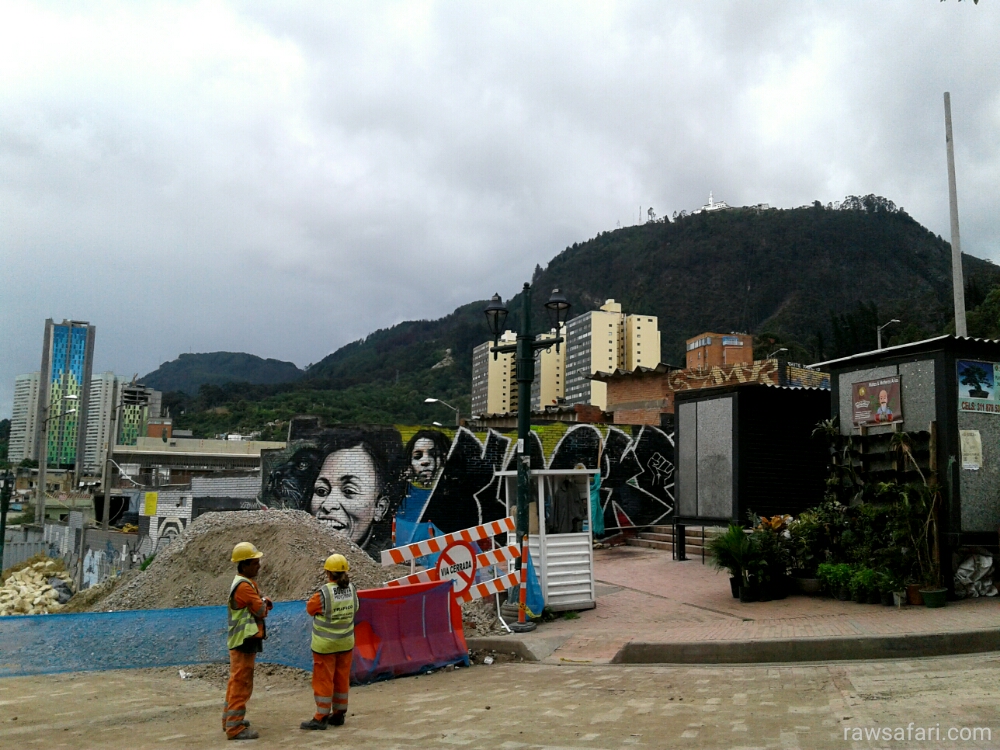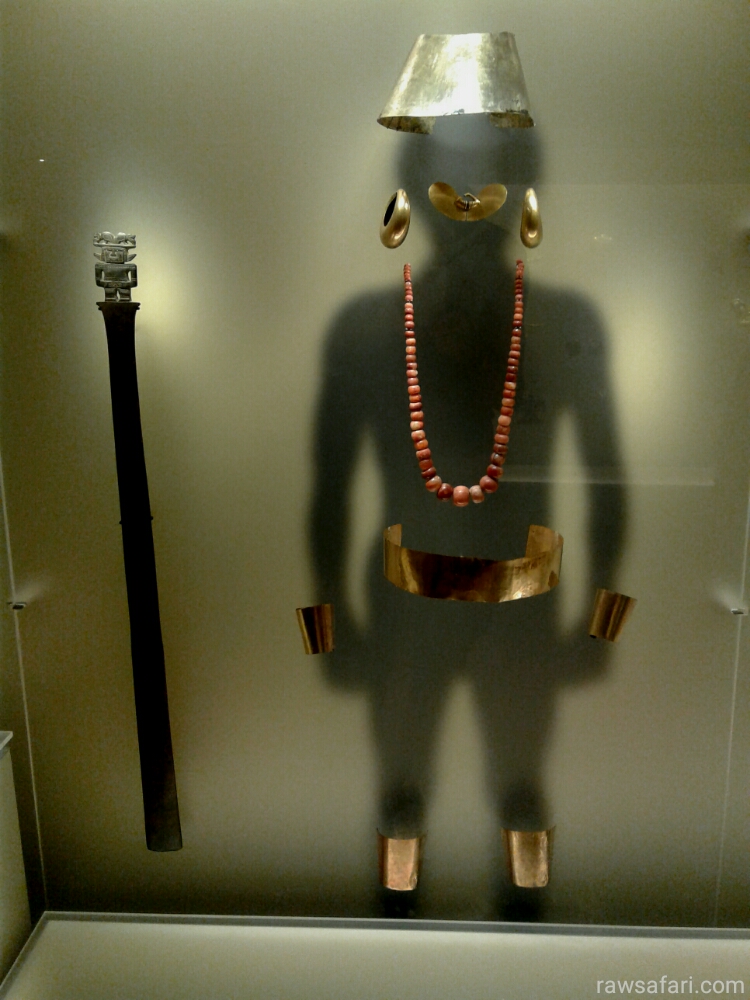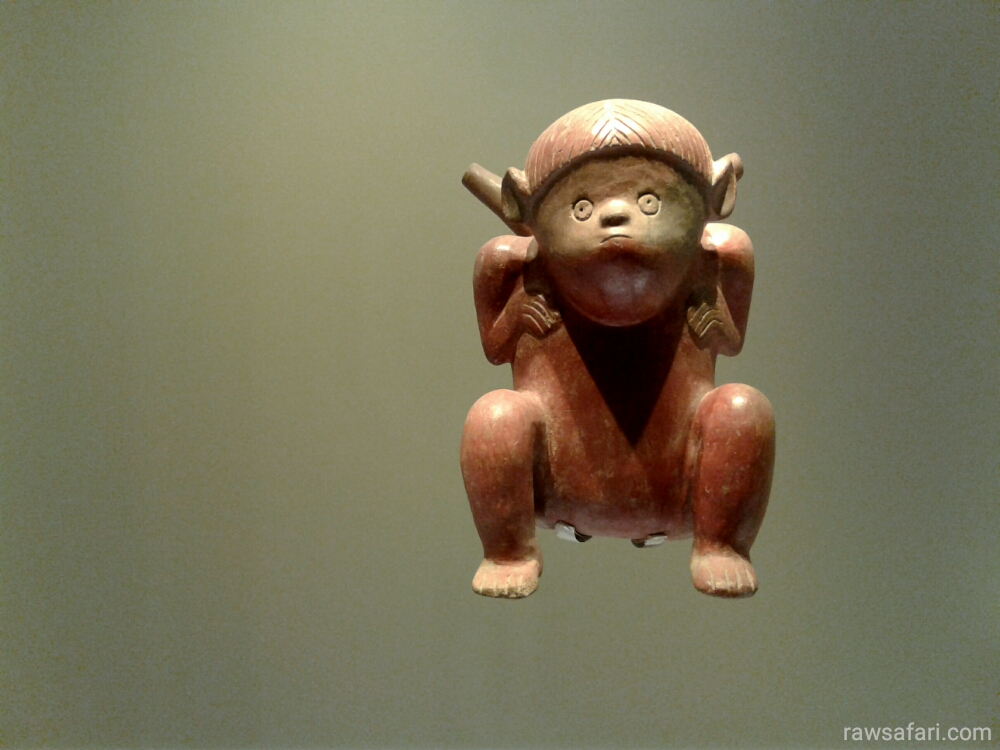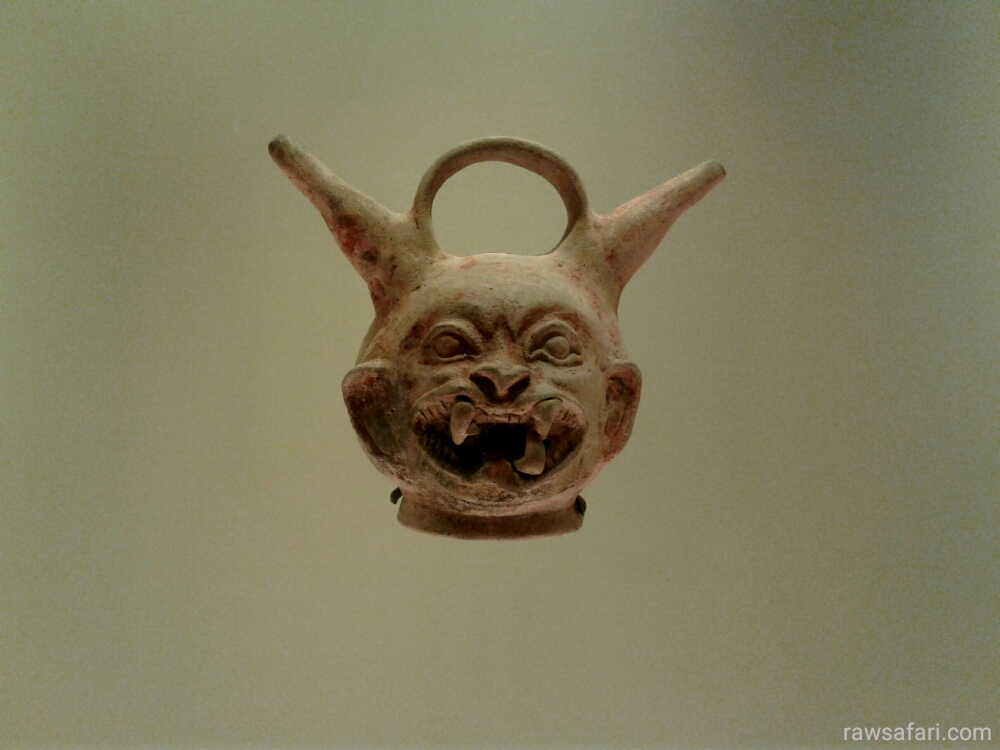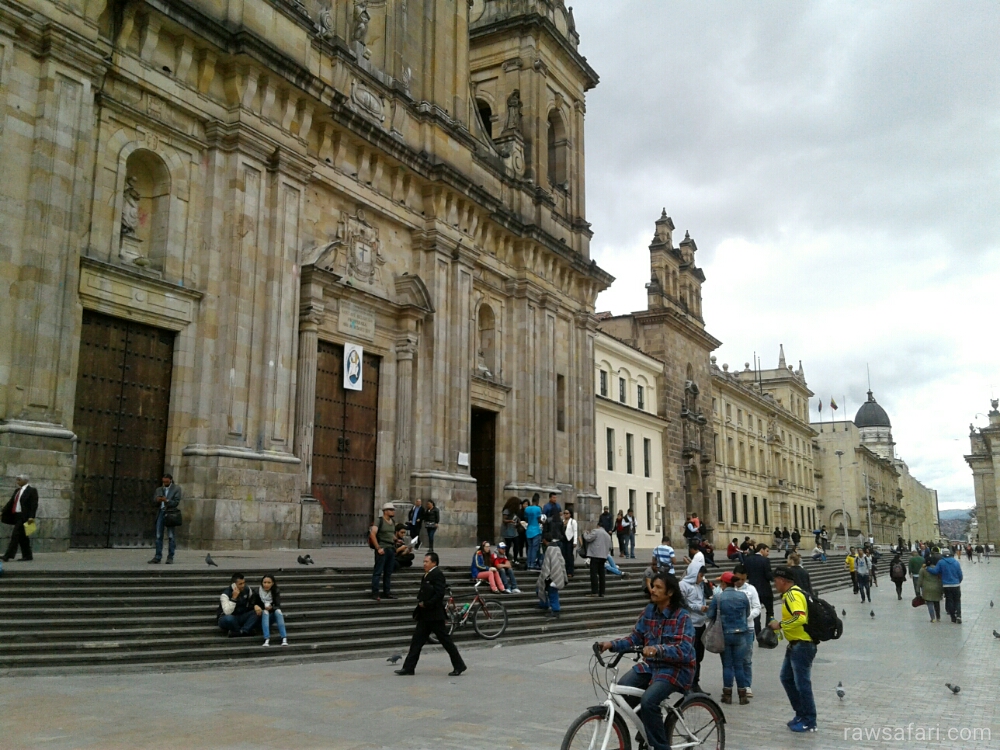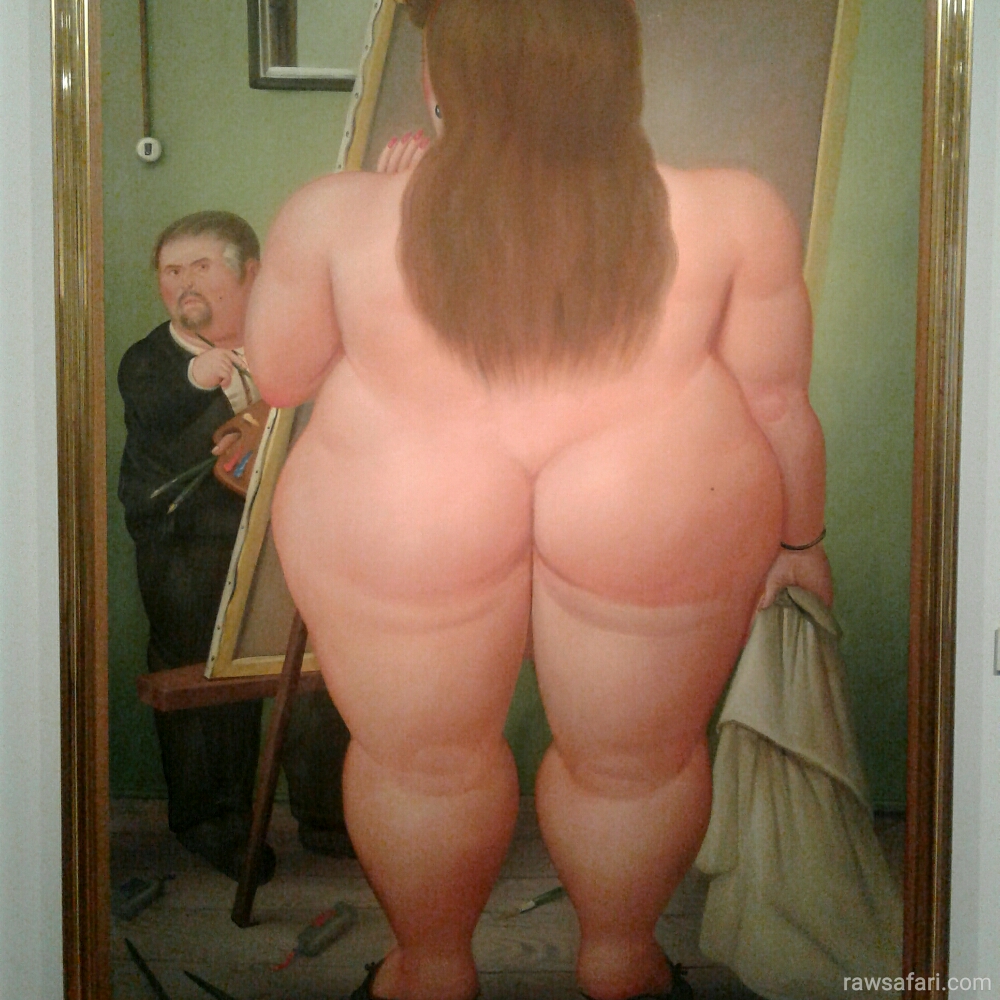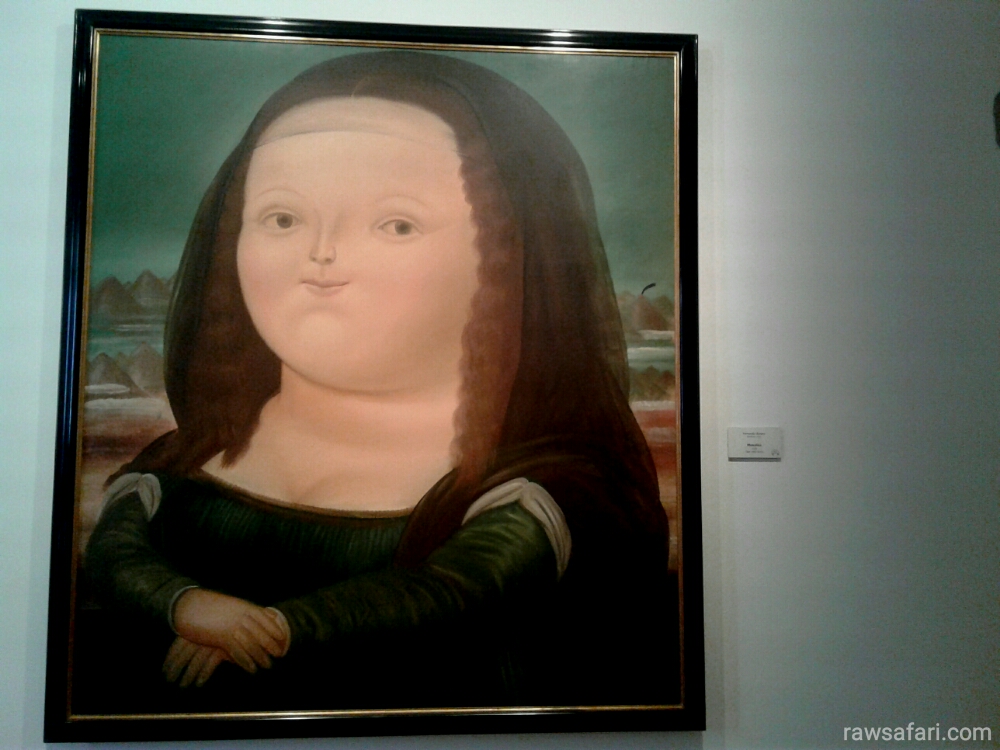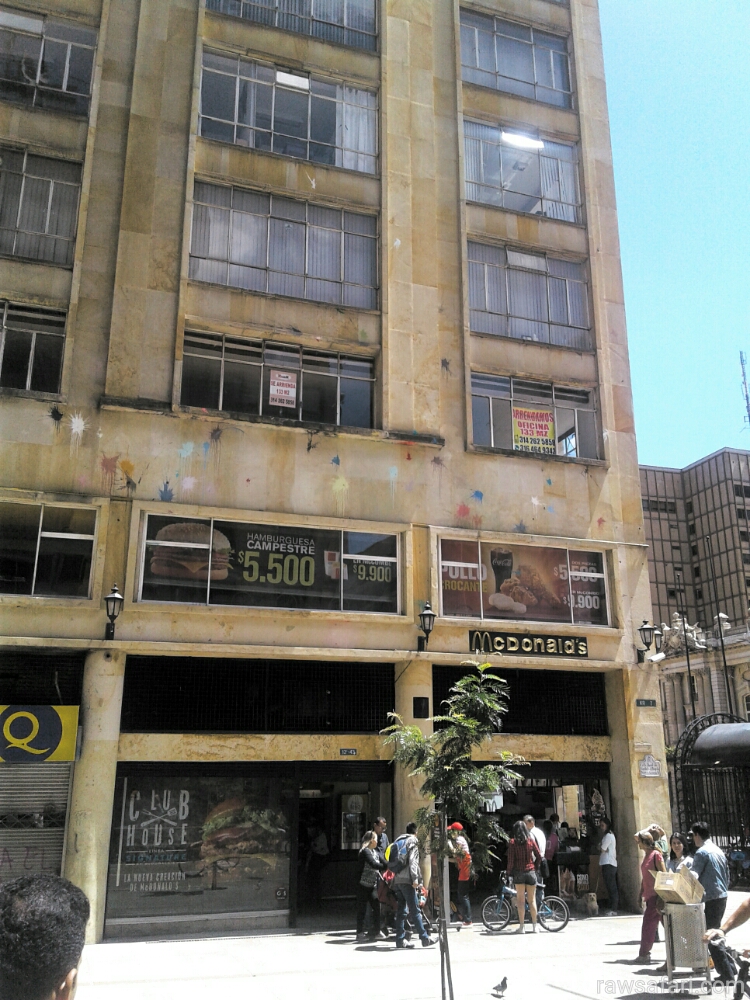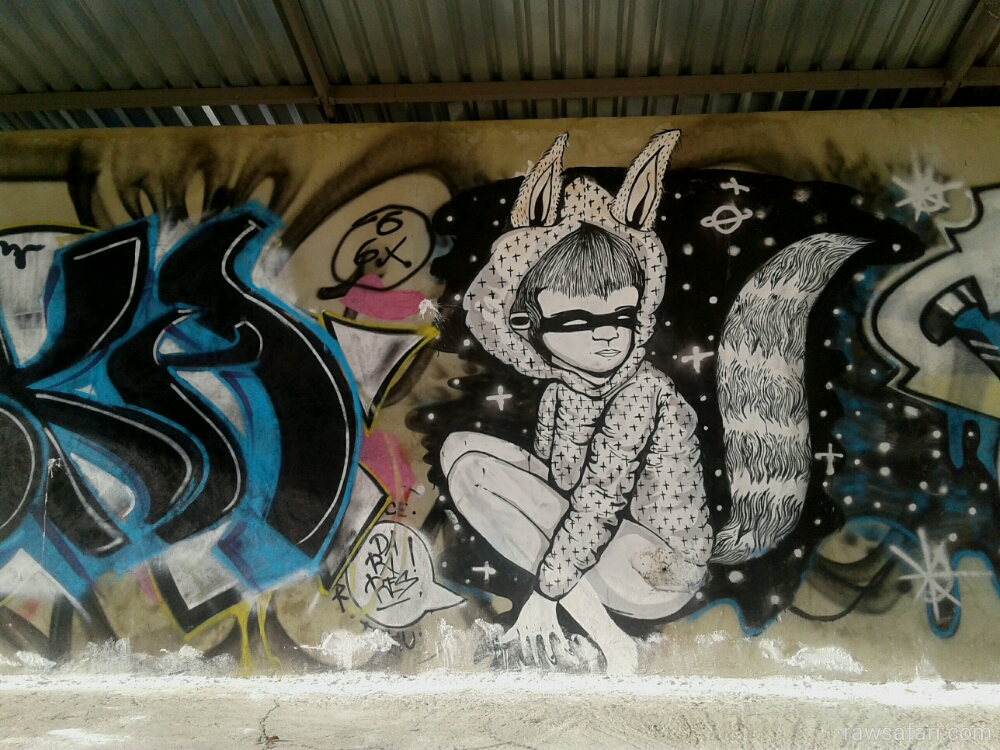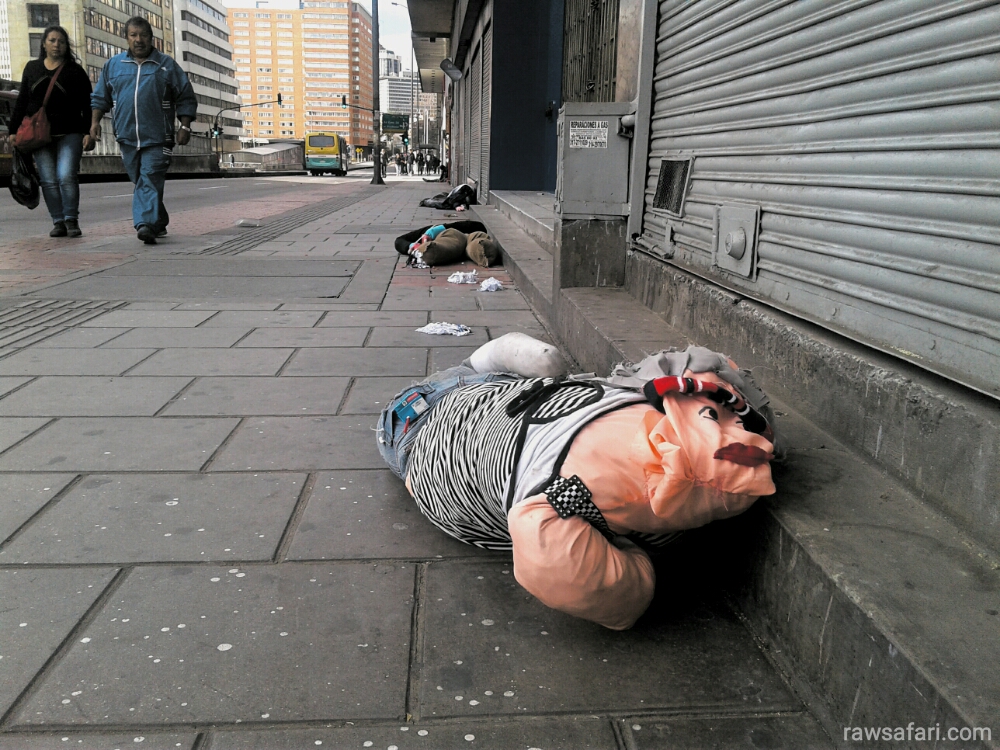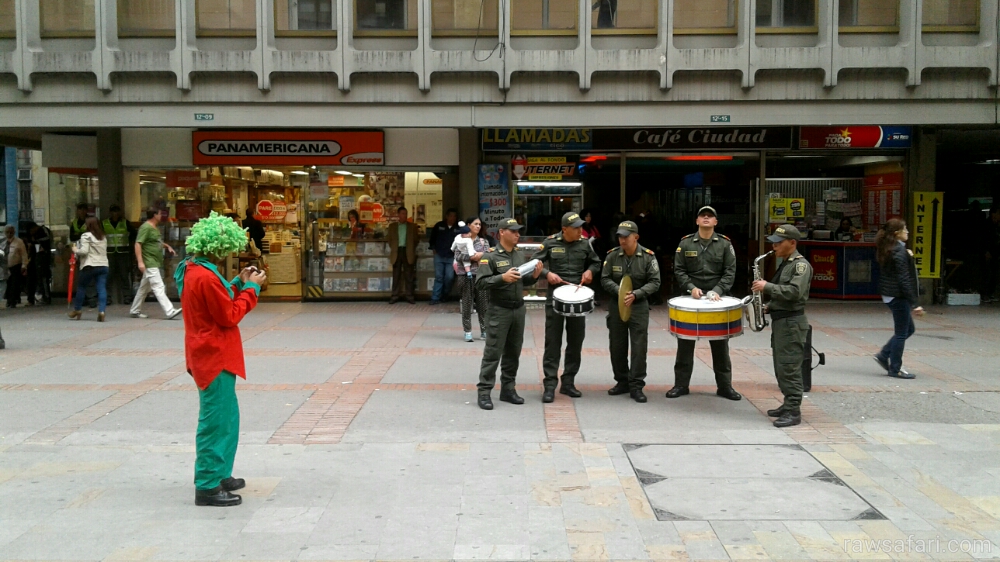Old.
“Hi, I’m Juan. Welcome to the free tour of Bogota” says the smiling guy with a red umbrella.
We shuffle together into a little clump on the footpath outside the ‘Gold Museum’. A bunch of scruffy looking, nervous tourists, hoping to figure out something about this bewildering city.
“Behind me is the Museo Del Oro. This museum houses the most extensive collection of ancient gold artefacts and ceramic art in South America” Juan tells us. Admission is free today, so you must come back later and see the collection.”
A skateboarder zooms past our little group and kicks a perfect ollie over the steps that lead down to the crowded Plaza.
“Bogota has very colourful street life, as you can see” Juan continues. “Unfortunately there are also many homeless people on the streets in the city. During the tour, homeless people may come and stand near our group. Don’t worry. They are just curious because we speak English. They will not do anything bad.”
“This is the main plaza of Bogota” Juan tells us. “Over there is the statue of Simon Bolivar. The presidential palace is just over there. Behind us is the Palace of Justice. This square was the scene of one of the most controversial episodes in Colombia’s history. You’ve all heard of Pablo Escobar, yes? He was Colombia’s most notorious drug lord. Well, the government of Colombia hunted him for a long time. They gathered a lot of evidence to try and convict him, and all that evidence was collected here, at the Palace of Justice. Pablo Escobar was not going to let them send him to prison, so in 1985 he paid a group of guerillas two million dollars to seize the Justice Palace, which they did.”
An old man in filthy looking clothing stops beside us as Juan is talking. He scowls at us, muttering under his breath. We nervous tourists try to follow Juan’s advice and not be alarmed.
Juan continues speaking, unperturbed. “The army responded by making a seige of this building. They attacked with many soldiers, and even a tank. The whole building was burned, and all the evidence about Escobar’s wrongdoing was destroyed. Now some people think that the guerilla attack was an inside job. They think the government was behind it, and those were not real guerillas. Despite all the bad things the guerillas have done during Colombia’s long civil war, many people still support them.”
The ragged old man suddenly starts yelling. I jump involuntarily. He snarls and spits for a few seconds and then stalks away.
A few members of the tour group giggle nervously.
Juan watches the old man go, unperturbed.
“It’s interesting what he said” Juan comments. “He said ‘must we cover our faces to be heard?’ He’s referring to the guerilla soldiers. They wear masks over themselves so they cannot be recognised. They act like bandits, stealing, killing and raping, but many still see them as heroes who stand for the common people. Unfortunately, in our country, where the government is so corrupt, even criminals can become heroic in the eyes of the people. OK. Lets walk to the next street and try some traditional Colombian hot chocolate. This street is often very crowded so we must stay close together.”
Fat.
Fernando Botero.
Colombian artist celebrity.
Likes to paint people who look like balloon animals.
Satirical stylistic choice?
Commentary on Colombian eating habits?
Could be the latter.
Every meal I’ve had here in Colombia is massive. The standard serving size is enough for two meals.
There are restaurants in Colombia that only serve desert. Are they cake shops? No. Ice cream with fruit and biscuits is a legitimate meal in Colombia.
There’s a standard meal format that most cheaper restaurants serve: ‘Almuerzo ejecutivo’; working man’s lunch. For around 5000 pesos (US$2.00) you get a bowl of soup, a glass of juice, a piece of chicken, rice, beans, salad and gravy.
There are plenty of shops I’ve seen in Colombia where beer is cheaper than bottled water.
Colombian ‘bread’ is more like cake. It’s super white, soft, spongy and sweet. I used to think Australians ate the dodgiest bread in the world until I went to a Colombian bakery the first time.
Fernando Botero donated a massive amount of art to the Colombian government so they could start an art museum. His condition was that admission to the gallery had to be free for everybody. His philosophy is that art should be accessible to all the people. Nice guy.

Want to know how to travel the world on $10/day?
Get your FREE e-book: The Travel Hackers Handbook.
Dirty.
In 1948 Colombia’s most popular presidential candidate, Jorge Gaitán was assassinated outside this building, where he worked as a solicitor. He defied the ruling elite and promised sweeping social reform. He was widely regarded as a communist.
Many Colombians believe that the CIA was behind his assassination. Now the building where he worked and died is a McDonald’s restaurant. Ironic.
There were huge riots after Jorge Gaitán’s killing. Downtown Bogota was decimated. Now when Colombians protest, as they often do, they always gather where the riots took place to remind their government not to fuck with them.
There’s lots of beautiful graffiti on Bogota’s walls. It used to be strictly illegal, but a few years ago the cops shot a young artist in the back and the resulting public outrage changed the public attitude toward street art.
I love this piece:
There are homeless people sleeping in the street everywhere in Bogota.
Some clever artist put a row of homeless dummies on the footpath near the city’s busiest mall. They’re just bundles of rags dressed in old clothes but they make their point eloquently.
You can become so used to seeing people’s suffering you just walk past it without a second glance. It becomes a survival mechanism at some point I think. If I stopped to process my feelings about every sick, hungry broken human I see on Bogota’s streets I would be a nervous wreck.
Colombia’s government and police certainly aren’t doing anything to ease the plight of the homeless. This is a city where people die of hunger or cold completely disregarded and unnoticed.
This artwork is true graffiti. It’s humble but important.
It’s reminding us about our blindness. It’s showing us what we’ve learned to ignore.
That’s what art is supposed to do right? It opens our eyes and turns our heads towards the most human parts of ourselves that we’d rather forget.
That awareness is something art accomplishes more effectively than institutions like governments and police ever can.
A few more words about Colombia’s Policia.
The cops in Colombia are widely reviled. All I ever hear from average Colombians about their police force is how venal and corrupt they are.
The cops here might be idle and exploitative but they are trying to do something about their public image.
Here they are, in the photo below, jamming on the street.
It really cracked me up when I saw this. It’s a stark comparison to my experience with the cops on the Gold Coast in Australia, where they would come round and harass us when we were busking. Talk about cultural perversity.
I showed this picture to my Colombian friend Andreas.
“My favourite thing in the picture is the clown busker taking a photo” I commented to him.
Andreas laughed. He said “yes, it is a funny picture, and you know, the guy in the clown suit is also police.”
